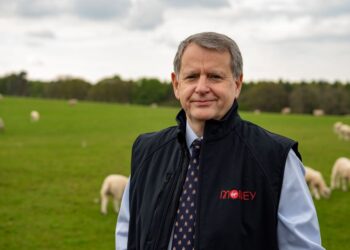A project to restore a river system to a natural winding course, for the benefit of people and wildlife, has been implemented in a valley near Haweswater.
The RSPB has announced that a 500-metre section of drain has been renaturalised in Swindale.
The restoration was a multi-partner effort between the RSPB, landowner United Utilities, the Environment Agency, contractors Ebsford Environmental and environmental consultancy AquaUoS, and was funded by the Environment Agency and RSPB.
Oliver Southgate, river restoration project manager for the Environment Agency, said: “This and many other projects being delivered across the North West contributes to the Environment Agency’s 2025 Environment Plan that aims to put the environment and communities at the heart of everything we do.”
The project involved a drain which had been dug in former years in an effort to speed the removal of water from the valley.
However it is now known that straight channels like this increase downstream flood risk by quickly flushing a greater amount of water downstream into connected river systems.
Dr George Heritage, director of AquaUoS at the University of Salford, who assisted with the design and delivery of the project, said: “The RSPB and partners are doing some truly pioneering restoration work in Swindale with the rejuvenation of tributary fan systems helping to restore valley margin wetlands and store sediment that can otherwise accumulate downstream to create a flood risk.”
By restoring natural features such as meanders and pools and reconnecting natural flood plains, more water can be retained in the landscape to slow the flow of water downstream.
Ben Fisher, head of projects at Ebsford Environmental, said: “We formulated a partnership approach with the RSPB, Environment Agency and United Utilities, enabling us to change the design of the restoration throughout the project to create new features, but also to enhance natural features.
“As we have been working closely to a SSSI, we have used low impact machinery and sediment entrapment mats to prevent damaging these valuable habitats throughout the process.”
Lee Schofield, site manager at RSPB Haweswater, said: “This new phase of river restoration work adds even more healthy habitat to the valley of Swindale, where we have already worked successfully with United Utilities, the Environment Agency and Natural England to enhance the area for wildlife over recent years.”
The project compliments the Swindale Beck restoration completed in 2016, which re-meandered this historically straightened channel in order to improve the quality of water at source for people and wildlife.
Lee added: “This project has created more than half a kilometre of new, sinuous channel as well as wetlands and ponds that will support a broad range of wildlife, from dragonflies and amphibians to dippers and Atlantic salmon.
“All the work that has been done in Swindale works alongside our farming operation, helping to demonstrate how conservation and farming can work hand in hand.”
The Swindale wetland project was completed between August and September this year, and is part of a wider series of habitat restoration projects taking place at Haweswater to improve water retention and quality — including peatland restoration, tree planting and the natural regeneration of upland plants.”
John Gorst, catchment partnership officer for United Utilities, said: “This is another fantastic example of how we can achieve so much more by working in partnership and by looking at the water catchment as an entire system.
“This project follows on from the successful Swindale Beck restoration and will further enhance this spectacular valley for both its biodiversity and improved water quality.”
A short section of the permissive footpath through Swindale has been temporarily rerouted to allow for this restoration, and will be in place throughout winter.































